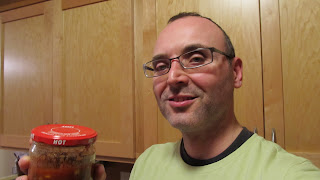At some point, I need to stop
the students from speaking to me and simply start class or I suspect I could
spend twenty minutes answering their questions and comments. I wish I could give them the one on one time
and serve their needs, but behind them await the twenty five other students in
my classroom. It takes several minutes
to get this class started as they slowly and reluctantly walk to their seats. I cajole and coerce several of them. Some days I feel like a cowboy corralling
cattle into their pens. And then, about
a week ago, loudly enough for everyone to hear, a girl blurts across the room:
“If you don't stop I'm going to slap the Mexican right out of you!”
“Whoa!” I say loudly. “Not acceptable. Everybody sit down right now. No more questions. No more comments. No more talking. Everybody in their seats.”
And then a boy shouts to
another boy, “Shut up, faggot!”
“Whoa! Not acceptable,” I say again. “Everyone in their seats now.”
The kids seem to know that the
word they just heard is not acceptable and they quickly move to their seats,
sit down, and are silent.
“I don't know what's going on
right now,” I say, “but I just heard two things that are completely
unacceptable and inappropriate and I am going to address them right now.”
I remain remarkably calm. For
the past ten years as a reminder I've used a white mug with these wise words on
it:
It's been my mantra many
times. I must be channeling this quote
when the girl yelled out the racist comment and the boy yelled out the
homophobic comment because I stay calm and in control and say something along
the lines of this:
“M, everybody heard you say
what you said because you said it so loudly, so I'm going to acknowledge that
you said it, but I'm going to address it to everyone. What M said is racist. She may not think it is. She may think it's
just funny. You may think it's funny. But in this context, in a public space,
too many people could be offended by that and too many people could consider it
a racist comment that I am going to say it is a racist comment. And it is not
acceptable.” I point to the large poster
I created that has hung in my room for the past two years. “Read what it says,” I say. “We respect everyone's cultural diversity in
this classroom. And look around you,
boys and girls. This classroom, your
class, your peers represent a multitude of cultural diversity. I look out into this classroom and I see
African Americans and Hispanic Americans and Asian Americans and Caucasian
Americans. And what do you all have in
common? That you are Americans. And as Americans you have to respect each
others' cultural diversity and you have to be aware that racism is not
acceptable and racist comments are a part of that racism. Our country has had a long and ugly history
of racism against people of almost every race and it needs to stop now and it
needs to stop here.”
I'm proud of that teachable
moment turned into a patriotic speech.
But I'm not done: “And D, the word you said is not
acceptable. Faggot is an ugly and mean
word that mean people have called gay people to be mean. Many people, including myself, find that word
is as ugly as the n word.” I address the
entire class: “And when I say the n word I think all of you know what I mean
and it's such a mean word that I'm not even going to say it. The word D just said is like the n word to me
when I hear it and I will not tolerate in my classroom and we will not tolerate
it our school. And it is my belief that
we shouldn't tolerate it in our families or our society. It needs to stop.”
I'm proud of that teachable
moment turned into a gay acceptance speech.
I take a deep breath. The room is silent. Eyes are on me or turned
away ashamed and embarrassed. “Boys and
girls,” I continue. “This year too many
of you have been mean to someone else.
Maybe it's something racist or homophobic you said. Maybe it's teasing
you did. Or bullying. But it's got to stop. Kids feeling are being hurt. Be nice to each other. Be kind to each other. It's the golden rule that we learned about in
our IGH MS values: treat others the way you would want them to treat. And how do we all want to be treated? With kindness and respect. So be kind and be respectful. It is that simple and that easy and many of
you need to start doing it now with your words and actions. Words hurt.
But words also help and heal and make people feel good. So choose the ladder. Be kind.
Be more mindful, more aware of the things you say and make sure what you
say is always kind and respectful.”
I pause. I take several breaths. No one moves. No one
says a word. I said all I needed to say about this particular topic and so I
move on to the assignment explanation at hand.
This incident reiterates for
me that we as teachers need to teach kindness.
Not that we already aren't, but it seems that more and more students are
in our schools are unkind in their words and actions. It's certainly not all of them, but too many
of them to create a true learning environment.
This is not particular to our suburban middle school, but rather indicative of
many elementary, middle, and high schools across the country.
I don't know the cause. Is it parents? Is it lack of spiritual
instruction at home or at a place of worship? Is it media bombardment of
violence and meanness and
craziness? Is it poverty? Whatever the multifaceted and interconnected
cause, the symptoms seem rampant and contagious: mean words, mean actions,
angry outbursts, insubordination, disrespect, disruption, racist, sexist, and
homophobic comments, teasing, bullying, fighting, school shootings. Whatever that multifacted and interconnected
cure, it needs to run deep through the many veins of our society and into our
families, places of worship, media, class systems, and education.
It seems to me we need to
deliberately and systematically teach kindness and respect to some of our
students. By this (and I'm in the
nascent stage of this idea) I mean full courses with curriculum based standards
and rich resources and experiences taught by accredited teachers trained in
kindness instruction, experience, and assessment. Our society—our world—is so complex that we
need this simple and profound education and foundation.
It's a radical idea and a
paradigm shift in the way we think about our schools and the classes we teach
in our schools, but for the future success our schools and our society, our
public school system needs to revision and retool for the twenty first century
in so many ways. Teaching kindness
stands like a stalwart sentinel at the forefront of this change, the peaceful
warrior promoting kindness and spreading the seeds of love.
As the poster on my classroom door states and which I hope all my students read and understand:








